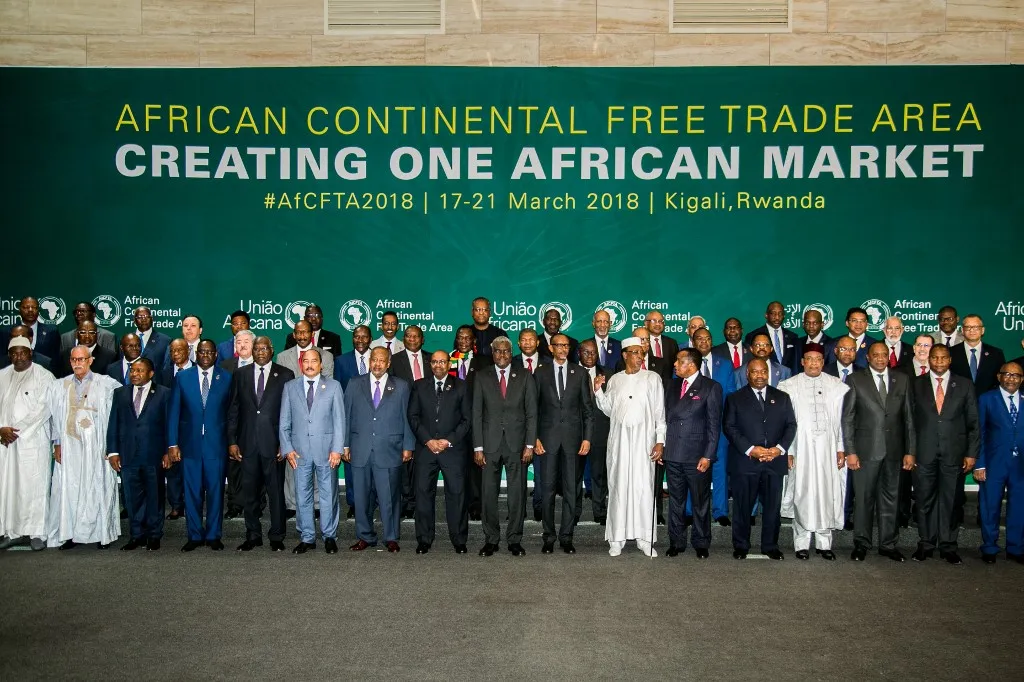The African Continental Free Trade Area (AfCFTA) is one of the 15 flagship projects of the Agenda 2063 (https://au.int/en/agenda2063/flagship-projects), a framework adopted in 2015 by the African Union to guide the developmental growth of Africa.
AfCFTA was established in 2018 by the African Continental Free Trade Agreement (https://au.int/en/treaties/agreement-establishing-african-continental-free-trade-area) (Agreement) and officially launched in 2021. Currently, AfCFTA is the world’s largest free trade area since it unites 54 African nations into a single market with over 1.3 billion people and a combined GDP exceeding US$3.4 trillion.
The main goal of AfCFTA is to make trading easier by reducing tariffs and removing trade barriers. The Agreement encourages businesses to expand across borders and brings opportunities for everyone—business owners, workers, and governments.
Key Areas of AfCFTA
Simplifying Cross-Border Trade
One of the main goals of AfCFTA is to make trading across African countries easier. For this to work, countries need to align their trade and customs rules with AfCFTA guidelines. This means reducing tariffs and ensuring consistent standards and regulations. For example, goods produced and approved in one AfCFTA member country may face fewer obstacles when entering another country.
Protecting Intellectual Property (IP)
As businesses expand into new markets under AfCFTA, protecting ideas, brands, and inventions becomes more important. Different countries have varying rules for trademarks, copyrights, and patents, which can lead to challenges. AfCFTA aims to create a unified approach to protect intellectual property across borders, making it easier for businesses to safeguard their work.
Promoting Fair Competition and Investment
AfCFTA aims to attract more investment by creating fair competition rules that protect local businesses and provide equal opportunities for foreign investors. Countries are expected to adopt policies that promote transparency, prevent unfair practices, and support healthy competition. This ensures businesses can thrive in a more open and balanced market.
Resolving Trade Disputes
In a large trade area like AfCFTA, disputes between businesses or countries may arise. The agreement includes a system for settling trade conflicts through arbitration and other processes, helping resolve issues quickly and fairly without the need for lengthy legal battles. This mechanism allows businesses to maintain strong cross-border relationships and ensures smooth trade operations.
Tools for implementation
- Pan-African Payment and Settlement System (PAPSS): This system, developed with the African Union and Afreximbank, makes it easier and cheaper to make cross-border payments within Africa, reducing currency conversion costs.
- AfCFTA e-Tariff Book: An online platform that helps traders easily find updated tariff rates and rules for trading between member countries.
- Rules of Origin Manual: This guide explains how to determine where goods come from, making sure only products made in AfCFTA countries benefit from the Agreement. It outlines criteria and necessary documentation for products.
- Non-Tariff Barrier (NTB) Online Reporting Tool: This allows businesses to report issues and obstacles like delays and unfair standards in cross-border trade. It will help the relevant authorities to eliminate non-tariff barriers and make trade more transparent and fairer across borders.
- Guided Trade Initiative: This program promotes direct trade between AfCFTA countries by sharing best practices and experiences in the implementation of AfCFTA.
- AfCFTA Adjustment Fund: This fund is aimed at helping the public and private sectors of state parties to adapt to the new trade environment by addressing revenue loss from reduced tariffs, supporting production, and building value chains in sectors like agriculture and manufacturing.
Getting involved in AfCFTA
For business owners, entrepreneurs, and professionals, now is the time to start exploring how AfCFTA can serve as a launchpad for growth:
- Evaluate Market Opportunities: Identify new markets within Africa for your products or services.
- Strengthen Cross-Border Networks: Collaborate with businesses, suppliers, and professionals in other African countries.
- Stay Informed: Follow AfCFTA developments and leverage resources from national and continental trade bodies to ensure your business is prepared for the expanded market.
AfCFTA offers a chance to transform Africa’s economy, promoting collaboration, growth, and economic resilience. Businesses and individuals who embrace this change stand to benefit from greater opportunities and stronger regional connections.
Read also on How to register a business in Ghana


